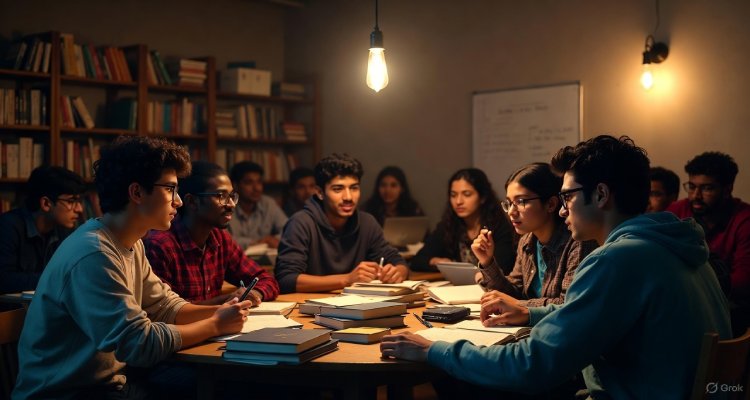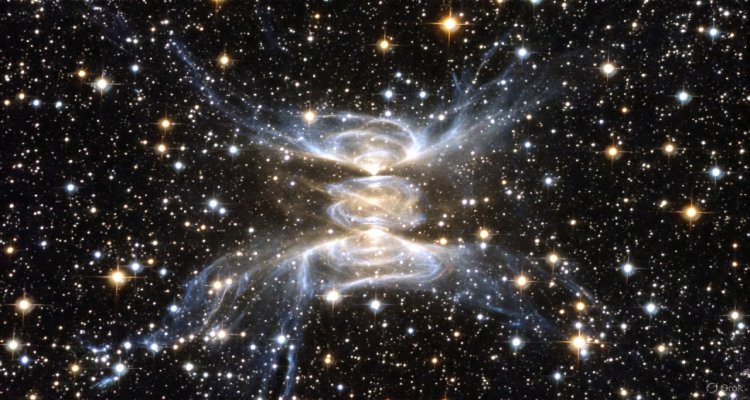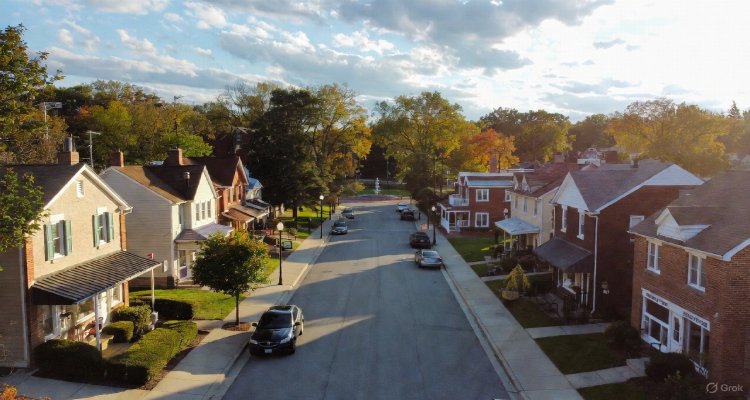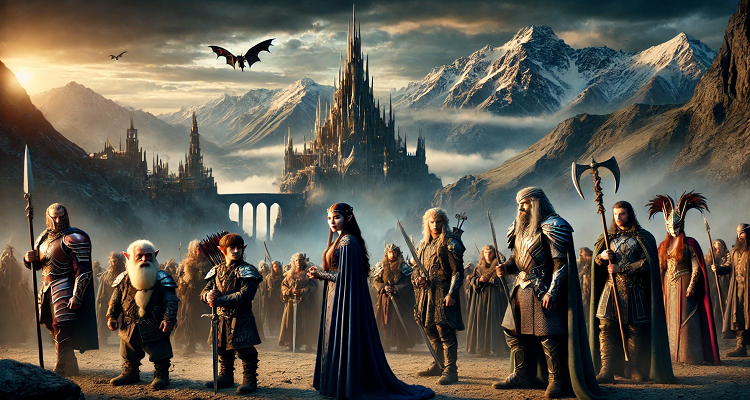Rings of Power: How Season 2 Wastes Middle-earth’s Potential
When Amazon Prime’s The Lord of the Rings: The Rings of Power debuted, the anticipation was palpable. With a jaw-dropping budget, breathtaking visuals, and source material drawn from the intricate mythology of J.R.R. Tolkien’s writings, it seemed poised to become a monumental entry in the fantasy genre. The series is set during the Second Age of Middle-earth, an era steeped in mystery and legend, and yet relatively unexplored on screen. This period covers the rise of Sauron, the forging of the infamous rings, and the fates of civilizations like Númenor, ultimately laying the groundwork for The Lord of the Rings trilogy.
Season 1 of The Rings of Power had its merits. It introduced audiences to a vast, visually stunning world and a diverse cast of characters—both familiar names from Tolkien’s legendarium and new faces created for the series. The production value was undeniable. Each scene was a testament to the immense effort poured into bringing Middle-earth to life, from the elaborate sets to the intricately designed costumes and top-tier special effects. In terms of spectacle, Season 1 delivered.
Moreover, the series had freedom in storytelling. Unlike the tightly structured narratives of The Hobbit and The Lord of the Rings, The Rings of Power draws from scattered references and appendices in Tolkien’s works. This meant the writers, J.D. Payne and Patrick McKay, had the liberty to craft their own narrative arcs while still adhering to the lore. There was enormous potential to tell a fresh story about the rise of Sauron and the creation of the titular rings of power.
However, potential and execution are two different things. And as The Rings of Power moves into its second season, the series starts to unravel.
A Confusing and Disconnected Storyline
One of the most glaring issues with Season 2 is its narrative structure. Season 1 may have been slow-paced and filled with exposition, but it seemed like a necessary step to establish the characters, conflicts, and world-building. However, Season 2 feels like a hurried sprint, throwing too many plotlines at viewers without the emotional grounding needed to make them resonate.
It’s easy to feel lost in this sprawling story. The show tries to balance multiple arcs at once: Galadriel’s (Morfydd Clark) quest for vengeance, the political turmoil in Númenor, the troubles in the Dwarven kingdom of Khazad-dûm, and the journey of the enigmatic “Stranger” (Daniel Weyman) with the Harfoots. Each storyline has potential, but there’s little cohesion, and worse, little time devoted to meaningful character development. The result is a series that feels directionless, as if the plot itself is wandering through Middle-earth without a map.
In Season 1, we saw how Sauron, the ultimate villain of Tolkien’s lore, was hiding in plain sight, deceiving even the sharpest minds of the Elves. His manipulations resulted in the creation of the first three rings of power, and this deception was one of the most compelling threads of the first season. But instead of building on that tension, Season 2 feels more like a series of disconnected moments rather than a coherent story. Viewers are expected to remember intricate details from the first season without much help, making the experience less engaging and, frankly, exhausting.
A Lack of Emotional Depth
Great fantasy isn’t just about epic battles and sweeping landscapes; it’s about characters that audiences care about. Whether it’s Frodo’s burden in The Lord of the Rings or Bilbo’s reluctant heroism in The Hobbit, Tolkien’s stories have always succeeded because they’re driven by relatable, emotionally rich characters. Unfortunately, The Rings of Power fails to give us anyone to truly root for.
Galadriel is positioned as a central figure in the series, but her character arc remains shallow. While Morfydd Clark’s performance shows glimpses of strength, her portrayal of Galadriel lacks the warmth and wisdom that fans of Tolkien’s world associate with the character. Robert Aramayo’s Elrond also feels flat. Both characters are given significant screen time, yet their relationships and internal struggles feel underdeveloped.
The Harfoots, who serve as the spiritual predecessors to Tolkien’s Hobbits, were supposed to bring the charm and simplicity that grounded the grander aspects of Middle-earth. However, even their storyline feels like a missed opportunity. Their journey with the mysterious Stranger is drawn out and vague, with little payoff in terms of character growth.
One of the more heartbreaking missteps is the conflict between Dwarven prince Durin IV (Owain Arthur) and his father, Durin III (Peter Mullan). Their strained relationship could have provided some much-needed emotional weight, especially given the rich history of the Dwarves in Tolkien’s works. But here, it feels more like an afterthought. The showrunners assume the audience will care, but without deeper exploration of their bond or the stakes involved, it’s hard to invest in their struggles.
Style Over Substance
The undeniable beauty of The Rings of Power cannot be overstated. Every episode is visually stunning, with breathtaking views of Middle-earth’s landscapes, from Númenor’s majestic coastline to the vast mines of Khazad-dûm. But as dazzling as the production is, it cannot mask the emptiness of the story. This is a case of style over substance.
Spectacle alone doesn’t create a memorable series. It’s the characters, the stakes, and the emotional investment that truly make a show stand out. And that’s where The Rings of Power falters. The intricate world-building and visual effects are only surface-deep, leaving little for audiences to latch onto in terms of meaningful storytelling.
A Waste of Source Material
It’s particularly disappointing because the source material offers so much potential. Tolkien’s Second Age is a time of immense drama and high stakes. The rise of Sauron, the forging of the rings, and the fall of Númenor are all moments that shaped Middle-earth as we know it in The Lord of the Rings. There are rich themes of power, corruption, and redemption to explore. And yet, the show seems more interested in quick plot twists and grand visuals than the deeper moral and emotional questions that make Tolkien’s work timeless.
The Future of Middle-earth on Screen
Season 2 of The Rings of Power proves that even a series with a nearly limitless budget and beloved source material can stumble without the right narrative focus. While the show has time to course-correct in future seasons, it’s hard not to feel that this iteration of Middle-earth is lacking the heart that made previous adaptations, like Peter Jackson’s films, so beloved.
It’s a lesson in the importance of character-driven storytelling. No amount of money, CGI, or beautiful sets can replace the emotional core that draws audiences in. Middle-earth deserves better than this—especially when the world of Tolkien’s imagination is so full of potential.
In the end, The Rings of Power reminds us that no production is too big to fail. What it needs now, more than ever, is a return to the heart of Tolkien’s storytelling: a focus on characters, relationships, and the timeless battle between good and evil. Without that, no amount of rings can save this series.











